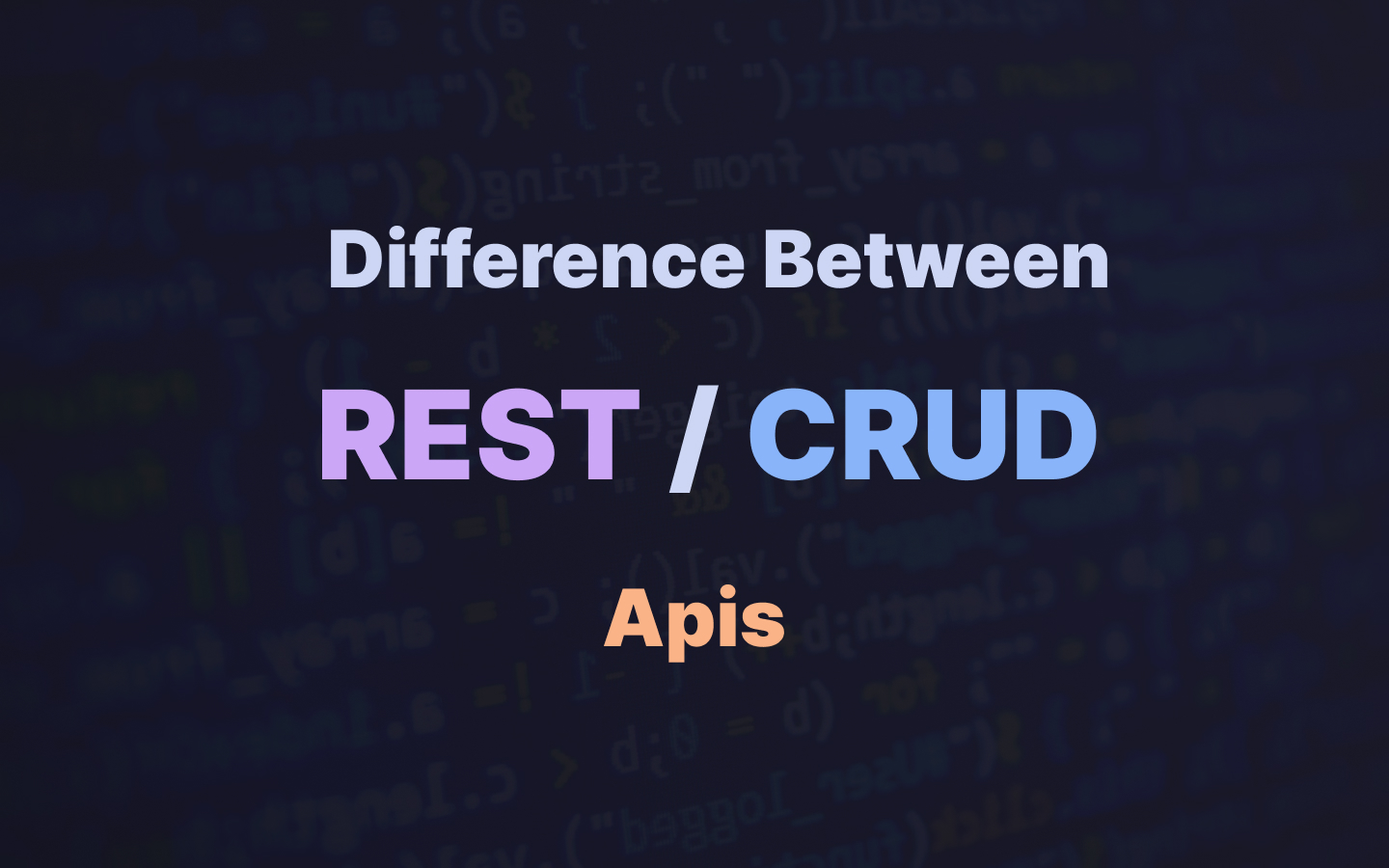August 25, 2023
Understanding the Difference Between REST and CRUD APIs
Dive into the key differences between REST and CRUD APIs and understand their use cases.

When it comes to building and interacting with web services, two common concepts are often mentioned: REST and CRUD APIs. While they both serve as means to communicate with backend systems, they have distinct characteristics and use cases. In this article, we'll dive into the key differences between REST and CRUD APIs.
Table of Contents
REST APIs
REST, or Representational State Transfer, is an architectural style for designing networked applications. It follows a set of constraints that allow systems to be scalable, maintainable, and adaptable. REST APIs are built around resources, which are identified by URLs, and interacted with using standard HTTP methods.
Key characteristics of REST APIs include:
-
Statelessness: Each request from a client to the server must contain all the necessary information. The server doesn't store any client context between requests, making it easier to scale and distribute.
-
Uniform Interface: REST APIs have a uniform way of accessing resources using standard HTTP methods: GET, POST, PUT, DELETE, etc.
-
Resource-Based: Resources are at the core of REST APIs. Each resource is identified by a unique URL, and clients can perform actions on these resources using the appropriate HTTP methods.
-
Cacheability: Responses from a REST API can be cached by intermediaries like proxies, improving performance and reducing the need for repeated requests.
CRUD APIs
CRUD, on the other hand, stands for Create, Read, Update, and Delete – the basic operations that can be performed on most data storage systems. CRUD APIs are designed around these actions and provide a straightforward way to manipulate data.
Key characteristics of CRUD APIs include:
-
Focused Operations: CRUD APIs are centered around the basic database operations. They expose endpoints for creating, reading, updating, and deleting records.
-
Simplicity: CRUD APIs are often simpler to design and implement, as they directly map to the fundamental actions needed for data management.
-
Less Flexible: While CRUD APIs are great for simple use cases, they might become less suitable for more complex scenarios that require different workflows and interactions.
-
No Standardization: Unlike REST, there isn't a strict standard for the structure and organization of CRUD APIs. This can lead to inconsistencies across different implementations.
Conclusion
REST APIs offer a more structured and standardized approach to building web services, making them suitable for projects that require scalability, flexibility, and adherence to best practices. On the other hand, CRUD APIs are simpler and more focused on basic data manipulation, making them a good choice for straightforward applications.
Both REST and CRUD APIs have their place in the world of web development, and the choice between them depends on the specific requirements of your project. Understanding their differences can help you make informed decisions when designing and implementing your APIs.
So, whether you're building a complex system that requires scalability or a simple application that just needs basic data operations, now you know which API approach aligns with your needs.
Remember, the choice between REST and CRUD is about finding the right tool for the job. Happy coding!